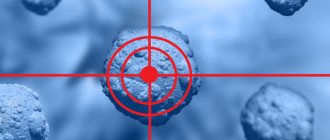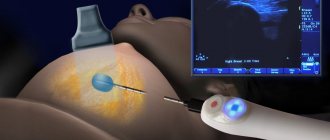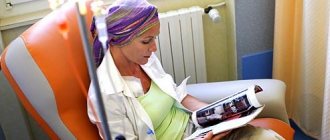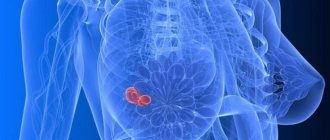general characteristics
Radiation therapy for breast cancer has been used for a long time and is highly effective. Its essence lies in the impact of radiation rays on the neoplasm in order to destroy it. The method is prescribed to patients to stop the proliferation of malignant cells.
In modern times, radiation treatment has been improved in many ways. It was made as safe as possible for human health. The rays affect only the affected tissues, minimally affecting healthy cells. This allows you to avoid the occurrence of serious disorders of the body.
Skin damage
Why do skin reactions occur? The fact is that radiation has a special effect on epidermal cells. They lose resistance to external influences. The natural protection of the skin is disrupted. The skin becomes more sensitive and delicate, it is easier to damage it.
The following complications may occur:
- Color change in the irradiated area.
- Discomfort.
- Painful sensations.
- Burning and itching.
- Dryness.
- Increased sensitivity to touch.
- Blisters that break open over time and turn into weeping sores.
- The development of an infectious lesion is possible.
- Ulcers, boils.
- Non-healing ulcers - develop very rarely, usually after long-term therapy in patients with severe chronic metabolic or immune diseases.
Externally, the skin reaction is very similar to a sunburn, and it feels the same. It is important to provide the skin with care and hydration, otherwise infections may enter and ulcers may develop. A dermatologist oncologist can prescribe appropriate treatment for skin complications.
Typically, complications appear during the 2nd week of treatment and disappear a month after the end of therapy. With proper care, discomfort can be minimized.
There is a special classification of the degree of skin damage, which allows you to assess the severity of complications:
- The first degree is slight redness and mild itching.
- Second degree – severe redness, peeling, swelling.
- Third degree - extensive redness, severe swelling, severe pain, formation of weeping ulcers.
Severe lesions are called burns. Since the skin is exposed to radiation, complications are a radiation burn. If symptoms of the first degree of damage are detected, it is enough to moisturize the skin and carefully monitor hygiene. At the second and third stages, specific treatment is selected - for example, creams with corticosteroids, which will help relieve swelling.
When using serious medications for the skin, it is important to carefully follow the instructions and limit their use over time. The same corticosteroids should not be used for more than a week.
If there is a risk of infection, cover the affected area with a sterile bandage until the skin surface has healed. If an infection does occur, local antibiotics are used and frequent dressings with antibacterial drugs are prescribed.
There are several clear signs that a radiation burn has become infected:
- Increased pain.
- Sudden development of severe edema.
- Sharp redness, inflammation.
- The appearance of fluid in the wound, the fluid is yellow or green, with an unpleasant odor.
- Temperature increase.
Usually, before prescribing antibacterial drugs, tests are taken to determine the nature of the pathogen. Sensitive skin, open to infection, can become infected with almost any pathogenic microorganisms or fungi.
Types of therapeutic effects
Irradiation is carried out according to an individual scheme developed for a specific patient. At the same time, the doctor evaluates the results of the patient’s examination. Radiation therapy can be performed in two ways:
- Outer. Irradiation of a cancer tumor at a distance using special X-ray equipment.
- Interior. Insertion of a device containing a radioactive substance into a malignant neoplasm. The drug acts during the procedure and is then removed from the patient’s chest.
Which of these varieties to choose is decided by the doctor based on the stage of development of the oncology.
Benefits and types of radiation therapy
Radiation therapy for malignant neoplasm is carried out after the gland is removed. It is carried out to prevent relapses and destroy remaining cancer cells. Radiation therapy is an effective, highly targeted method in the fight against malignant neoplasms.
Chemotherapy to fight cancer has more side effects than radiation therapy. During radiation treatment, side effects appear directly at the site of exposure. The use of radiation therapy to the breast reduces the risk of disease recurrence by fifty percent.
Depending on what radiation therapy is used for, it is divided into types:
- preoperative is carried out in order to destroy cancer cells that are located on the periphery;
- postoperative radiation is carried out after surgery in order to remove cancer cells that may remain after surgical treatment;
- if they want to leave the organ affected by the tumor, intraoperative irradiation is performed;
- self-irradiation is carried out if surgery is contraindicated for the patient;
- For nodular forms of cancer, interstitial therapy is used, which is carried out independently.
There are two irradiation modes:
- external – used most often, 30-40 sessions per week. The procedure lasts from 4 to 6 weeks. Irradiation is carried out using an X-ray machine.
- internal - radioactive implants are introduced.
Small incisions are made in the mammary gland, a catheter is inserted into it, and radioactive drugs are injected into it. This treatment lasts for a week. A catheter with drugs is injected directly into the affected breast tissue.
The doctor decides to use irradiation of the affected gland as a treatment when more than four regional lymph nodes are involved in the process, and axillary nodes with large neurovascular bundles are affected. Or if there is a question about preserving the mammary gland, radiation is used.
Appointment time
Radiation therapy in the treatment of breast cancer is prescribed after a thorough examination. It is important for the doctor to decide when exactly to use radiation, what dose and treatment regimen to use. In preparation for tumor removal, the method is used to reduce its size.
After surgery, radiation is required to get rid of residual cancer cells, prevent metastasis and recurrence of the disease. This method is also used instead of removing a tumor if it is considered inoperable.
Radiation therapy is rarely used as an independent type of treatment. Most often it is combined with chemotherapy. This allows you to achieve more effective results. Together, these techniques successfully prevent the development of metastases and relapse of cancer.
Consequences of irradiation for organs and systems of the body
Respiratory system
Reactions to radiation are: shortness of breath, difficulty breathing, cough, infectious diseases and, as a result, increased body temperature with signs of constant fatigue. Their manifestation is possible after three months after therapy.
Fever
Fatigue
Treatment of radiation injuries in the pulmonary area is limited to several procedures:
- magnetotherapy;
- inhalations;
- electrophoresis;
- special massage;
- therapeutic exercises.
Skin reactions
The skin in the irradiated area changes color, the woman experiences irritation, itching, burning, discomfort, and the affected skin is characterized by increased dryness.
Radiation exposure is similar to the effect of sunlight, affecting the epidermis and causing burns. The blisters that appear on the skin break open and bleed. If you do not provide proper care for wounds, their healing will take a long time.
Important! Report all changes that occur to the skin during radiation therapy to the treating and monitoring specialist.
Pain syndrome in the pectoral muscles
During and after treatment, women diagnosed with breast cancer may experience shooting pains that resemble electric shocks. The same syndrome occurs in patients who have undergone surgery. This is caused by swelling and irritation of nerve fibers in the breast tissue.
These symptoms are relieved by taking anti-inflammatory drugs. After completing the course of radiation therapy, the pain will gradually subside.
Tightness in the muscles
Some patients notice compactions in the chest area, the muscles become stiff and quite dense. This is typical for the muscle connecting the anterior chest wall and shoulder.
The cause of the symptom is the formation of scar tissue. Painkillers will help relieve the condition. As a rule, this side effect is mild.
Fractured ribs
Radiation negatively affects the condition of the ribs, they become more susceptible to fractures. But in fact, the percentage of such fractures is quite low: no more than 1% of cases. This injury occurs as a result of a direct blow to the chest. Fractures heal on their own.
Duration of treatment
The attending physician always determines the timing of radiation therapy for approximately each patient. It is impossible to predict the exact time of treatment in advance. If irradiation is carried out as a preparatory stage for the removal of a tumor, then a short course of treatment is carried out. It lasts on average 4.5 weeks.
If therapy is prescribed after surgery, it takes about 7 weeks. Patients undergo treatment for breast cancer no earlier than 30 days after tumor removal.
Consequences after radiation therapy to the brain
Fatigue
Radiotherapy can cause increased fatigue. This type of radiation is used if:
- There is a primary brain tumor.
- Cancer cells from another lesion have penetrated into the brain - a secondary neoplasm.
Fatigue gradually increases, the treatment program lasts several weeks. By the end of the course the patient may feel very tired.
Fatigue is a direct consequence of treatment, caused by the need to direct energy reserves to repair damaged healthy cells. Taking steroids further aggravates the lack of strength. The condition returns to normal when treatment ends, after about six weeks.
For some people, several weeks after completing therapy, fatigue is very severe, combined with drowsiness and a feeling of irritability. This is a rare side effect that does not require treatment and goes away on its own within a few weeks.
Hair loss as a side effect of radiation therapy
Radiation therapy to the scalp always causes some hair loss. If only a certain part of the scalp is exposed to radiation, only that part of the head will lose hair. But it happens that there is hair loss on the opposite side of the head, where the rays come from.
When the treatment ends, the hair resumes its growth. They may be of a different thickness or heterogeneous, have a different shade, or the structure may change (they were straight - they will become curly).
Hair care
During treatment, you will need to wash your hair carefully so as not to injure the skin. It is worth using warm or cold water, baby shampoo or non-perfumed shampoo.
It is better not to use a hair dryer, dry your hair carefully with a soft towel, or let it dry naturally.
Hats, scarves, bandanas, and wigs can be used as headdresses.
To make it easier to cope with hair loss and make the situation seem less dramatic, you can brush your hair briefly before starting treatment.
Nausea as a consequence of radiation therapy
Radiation to the lower part of the brain may cause nausea. This side effect of radiation therapy is quite rare. Nausea may last for several weeks after completing therapy. Medicines, diet, and sometimes additional treatments help improve the condition.
Medicines
Nausea is successfully controlled with antiemetic drugs. A radiation oncologist may prescribe them. Some take the tablets 20-60 minutes before treatment, others regularly throughout the day.
If some drugs are not effective, others may help.
Additional treatments
Relaxation techniques, hypnotherapy and acupuncture have been successfully used to manage symptoms such as nausea and vomiting.
Dietary recommendations
Food can have a serious impact on the condition:
- Eating or preparing food should be avoided when a person feels nauseous.
- Avoid eating fried, fatty foods that have a strong odor.
- If the smell or cooking causes irritation, you can eat cold or slightly warm food.
- You can eat several small meals and snacks every day and chew your food thoroughly.
- It is worth eating in small quantities a few hours before the start of treatment.
- You need to drink a lot of fluid, in small sips, slowly throughout the day.
- It is necessary to avoid filling the stomach with large amounts of liquid before eating.
Worsening of symptoms as a consequence of radiation therapy
For some people, symptoms caused by a brain tumor get worse after starting treatment for a while. This should not lead you to think that the treatment is not working or that the tumor is growing.
Radiation therapy to the brain can cause short-term swelling in the treated area, leading to increased blood pressure. Accordingly, the symptoms worsen over time - headaches, nausea, and convulsions occur. The doctor prescribes steroids and the swelling goes away. After completion of treatment, the dose of steroids is gradually reduced. If steroids cannot be taken for any reason, a targeted therapy called Avastin may be offered, which will lower pressure in the brain by changing the development of blood vessels around the tumor.
Harm from treatment
Radiation therapy is a relatively safe treatment procedure. Its use may cause unpleasant symptoms, but they appear temporarily, disappearing after completion of treatment. These include the following phenomena:
- General weakness.
- Nausea, vomiting.
- Dyspnea.
- Decreased blood pressure.
- Increased heart rate.
- Skin rashes.
- Soreness and burning of the skin in the irradiated area.
To reduce the risk of such reactions, you must follow all the recommendations of your doctor.
Restrictions on use
Not all patients are allowed to use radiation therapy for breast cancer. There are a number of contraindications for which the use of the procedure is strictly prohibited. These include:
- Systemic skin diseases.
- Diabetes.
- Carrying a child.
- Anemia.
- Exhaustion of the body.
- Heart attack.
- Kidney failure.
- Breathing problems.
- Serious heart pathologies.
- Tuberculosis.
Before prescribing radiation, diagnostics must be carried out to identify limitations to radiation.
How is radiation treatment for breast cancer performed?
During organ preservation surgery, the following may be subjected to preliminary or postoperative irradiation:
- mammary gland and/or its fragment (RT using the MammoSite method);
- mammary gland, subclavian, supraclavicular and axillary areas (in various combinations).
After a total mastectomy (complete removal of the breast), postoperative radiation treatment is carried out with irradiation of the chest wall, parasternal, axillary and supraclavicular area (as indicated).
The course duration ranges from several days to several weeks.
During the procedure, the patient is positioned on her back with her arm abducted, the position of which is fixed with special devices.
Additional recommendations from doctors
Patients treated with radiation therapy for breast cancer must adhere to the following rules:
- Walk outdoors regularly.
- Give your body more rest.
- Avoid stressful situations.
- Do not use hot water for washing.
- Engage in physical activity, but do not overload the body.
- Stop smoking and drinking alcohol.
Special attention is paid to nutrition. Patients need to follow a diet. It is advisable to adhere to it not only during therapy, but also in later life.
The diet must be balanced, providing the body with all the necessary nutrients. The menu includes a lot of fruits, vegetables, herbs, porridge, low-fat fish and meat soups, boiled or baked meat, fish, and dairy products.
It is better to avoid strong coffee, as well as sweet carbonated drinks. There should be no smoked meats, sausages, fatty, spicy, or too salty foods in the diet.
Thus, radiation therapy for breast cancer is considered an effective treatment method. But even this will not save if the disease is detected at a late stage. Therefore, women need to undergo preventive breast examinations every year.
Is any examination and treatment required after the end of radiotherapy?
The main goal of dynamic monitoring after the end of radiotherapy is the timely detection and treatment of relapses of breast cancer or nearby lymph nodes, as well as to identify new tumor foci in another gland that can spread to neighboring and distant organs and tissues.
However, in the absence of obvious symptoms, standard chest x-rays, bone scans, blood tests, or other testing are not helpful.
The follow-up schedule depends on the specific case of the disease. Typically, this includes examinations every few months for the first years after treatment, and then every 6-12 months, and so on. An important part of surveillance is annual mammography examination. If there are clear symptoms or clinical signs of relapse, the doctor will order blood tests, ultrasound, CT scan, MRI, chest x-ray and/or bone scan.
Up











